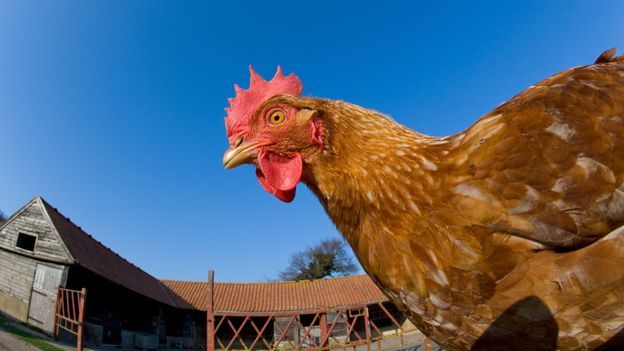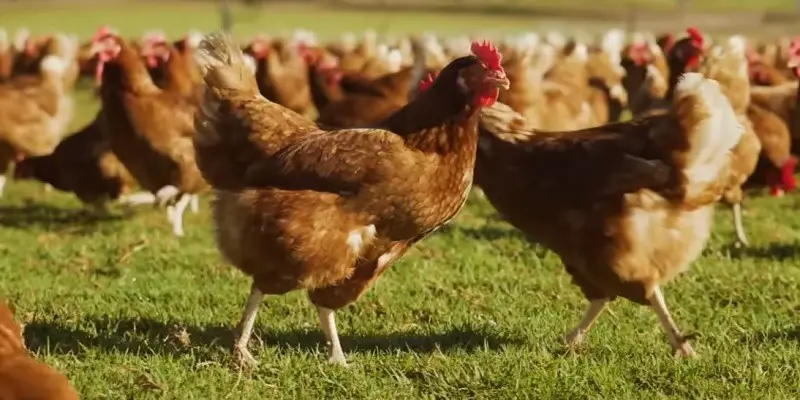No, chickens are not mammals. Chickens are classified as birds, part of the class Aves. They exhibit bird-specific characteristics such as feathers, laying eggs, and having a beak and a high metabolic rate, which distinguishes them from mammals that have fur or hair and nurse their young with milk.
Basic Biological Classification
Biological classification, or taxonomy, is the scientific method of categorizing organisms into hierarchical groups based on their physical characteristics, genetic makeup, and evolutionary history. At a high level, the animal kingdom is divided into several phyla, with Chordata being the phylum that includes both birds and mammals. However, within this phylum, animals are further divided into classes, and it is at this classification level that birds and mammals diverge.
The Classification Of Chickens
Chickens are an incredible species that play a vital role in various ecosystems. Their classification sheds light on their unique characteristics and evolutionary history. Understanding the classification of chickens can provide valuable insights into their place in the animal kingdom and their evolutionary relationships with other species.
Characteristics Of Chickens
Chickens are domesticated birds known for their distinctive features and behaviors. They typically have a compact, sturdy body with wings and feathers. Their beaks are adapted for pecking and foraging, and they have a remarkable ability to scratch the ground to find food. Chickens are also known for their diverse plumage colors and patterns, which vary based on their breed.
Classification Of Chickens As Birds
Chickens are classified as birds under the phylum Chordata and class Aves. As birds, they share several common characteristics, including the presence of feathers, a beak, and the ability to lay eggs. Their classification as birds places them within a diverse group of species that have evolved to inhabit various environments around the world.
Characteristics of Mammals
Mammals are a class of animals known as Mammalia. They share several distinct characteristics that set them apart from other animal classes:
- Warm-Blooded: Mammals are endothermic, meaning they can regulate their body temperature internally.
- Vertebrates: All mammals have a backbone.
- Hair or Fur: Mammals have hair or fur at some stage of their life.
- Mammary Glands: Female mammals possess mammary glands that produce milk to feed their young.
- Live Birth: Most mammals give birth to live young (except the monotremes, like the platypus and echidna, which lay eggs).
- Three Middle Ear Bones: Mammals have three distinct middle ear bones: the malleus, incus, and stapes.
- Presence of a Neocortex: A region of the brain that is involved in higher-order brain functions such as sensory perception, cognition, and generation of motor commands.
Why Chickens Are Not Mammals?
Chickens belong to the class Aves, which encompasses all birds. Birds share a different set of characteristics that are distinct from mammals. Here are the key reasons why chickens are not mammals:
- Body Covering: Chickens, like all birds, are covered in feathers rather than fur or hair. Feathers are a unique characteristic of birds, crucial for flight, insulation, and waterproofing.
- Warm-Blooded, Yet Different: Although birds are also warm-blooded, their method of regulating body temperature and their physiological mechanisms differ from mammals.
- Reproduction: Chickens lay eggs with hard shells in which the embryo develops outside the mother’s body. This is a stark contrast to the live birth characteristic of most mammals.
- Breathing System: Birds have a unique respiratory system that includes air sacs, making their breathing mechanism more efficient than that of mammals. This system is particularly advantageous for supporting flight.
- Bone Structure: Birds have a lightweight skeletal structure with hollow bones, which is different from the denser bones typical of mammals. This adaptation is crucial for flight.
- Heart Chambers: Birds, including chickens, have a four-chambered heart similar to mammals, but their overall circulatory system and the way oxygen is processed are different.
- Lack of Mammary Glands: Chickens do not have mammary glands. Instead, both male and female chickens have two reproductive organs that are significantly different from the reproductive systems of mammals.
Are Chickens Warm-blooded Creatures?
Chickens are indeed warm-blooded creatures. This means that they can maintain a consistent body temperature regardless of the surrounding environment. Unlike cold-blooded animals whose internal temperature fluctuates with the external conditions, chickens and other warm-blooded animals have the remarkable ability to regulate their body temperature.
Body Temperature Regulation In Chickens
Chickens belong to the class Aves, and like all birds, they are endothermic animals, meaning they generate their body heat internally. To regulate their body temperature, chickens have a high metabolic rate and efficient insulation provided by their feathers. This enables them to maintain a constant body temperature of around 105-107 degrees Fahrenheit.
Comparison To Other Warm-blooded Animals
When comparing chickens to other warm-blooded animals, such as mammals, it’s important to note that both groups share the ability to regulate their body temperature internally. However, mammals achieve this through different means, including shivering to generate heat and sweating to cool down. Chickens, on the other hand, rely on their metabolic processes and insulating feathers to maintain their body temperature.

Credit: chicken-yard.net
Reproduction In Chickens
When it comes to reproduction in chickens, it’s important to understand that chickens are not mammals, but rather belong to the bird family. Therefore, their reproductive process differs from mammals. Understanding the process of chicken reproduction and comparing its characteristics with mammals sheds light on the unique aspects of avian reproduction.
Process Of Chicken Reproduction
The process of chicken reproduction begins with the mating of a rooster and a hen. Before mating, the rooster performs a courtship display to attract the hen. Once mating occurs, the rooster transfers sperm to the hen’s oviduct, where fertilization takes place.
After fertilization, the hen will lay an egg once every 24-26 hours, and the eggs will be incubated for approximately 21 days until they hatch. During incubation, the hen will diligently sit on the eggs, keeping them warm and ensuring proper development.
Comparing Characteristics With Mammals
Unlike mammals, chickens lay eggs instead of giving birth to live offspring. The fertilization process occurs internally within the hen’s reproductive system, and the offspring develop externally, within the egg. In contrast, mammals undergo internal gestation and give birth to live young.
Furthermore, chickens lack mammary glands, a defining feature of mammals, and do not nurse their offspring with milk. Instead, the newly hatched chicks are capable of feeding themselves shortly after hatching.
Frequently Asked Questions
Are Chickens Mammals?
No, chickens are not mammals. Chickens are classified as birds, part of the class Aves. They exhibit bird-specific characteristics such as feathers, laying eggs, and having a beak and a high metabolic rate, which distinguishes them from mammals that have fur or hair and nurse their young with milk.
What are chickens classified as?
Chickens are classified as birds, specifically within the class Aves. They belong to the order Galliformes, which includes other domesticated and wild birds like turkeys, quails, and pheasants. Chickens are known for their distinctive feathers, egg-laying capability, and bipedal stance.
Are birds a mammal?
No, birds are not mammals. Birds are classified under the class Aves, characterized by their feathers, beak with no teeth, laying of hard-shelled eggs, high metabolic rate, and a lightweight but strong skeleton. Mammals, on the other hand, have fur or hair and produce milk for their young.
What makes a mammal?
Mammals are characterized by several key features: they are warm-blooded vertebrates, have hair or fur, produce milk through mammary glands to feed their young, give birth to live young (with few exceptions), and have a unique heart and brain structure. They also have three middle ear bones.
What animal group is a chicken?
A chicken belongs to the animal group known as birds, under the class Aves. Within this classification, chickens are part of the Galliformes order, which includes heavy-bodied ground feeders. This group is distinct from mammals, reptiles, amphibians, and fish in the animal kingdom.
Conclusion
Chickens are not mammals; they are birds, a distinction based on a comprehensive set of biological characteristics. The classification of animals into different groups such as mammals and birds helps scientists, researchers, and even laypeople understand the complex relationships and evolutionary histories among the diverse species on our planet.
While chickens and mammals share the commonality of being vertebrates within the animal kingdom, their differences in physical characteristics, reproductive methods, and physiological adaptations underscore the rich diversity of life. This understanding not only enriches our knowledge of biology but also highlights the importance of preserving biodiversity across all species.
Last Updated on April 23, 2025 by Pauline G. Carter

